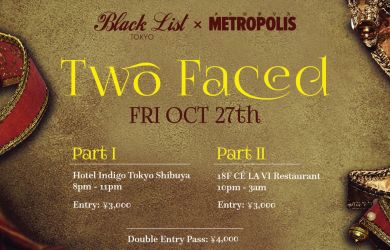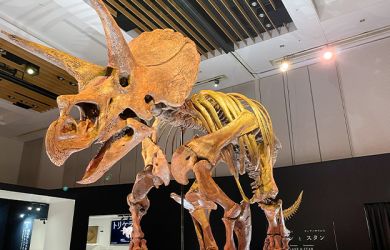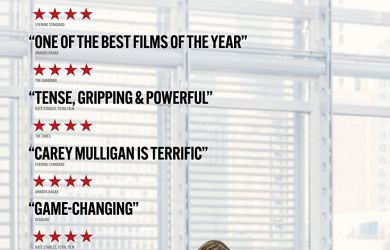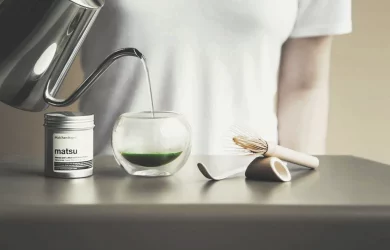
August 25, 2011
Jazz Art Sengawa
Cellist Hiromichi Sakamoto and Japan’s avant-garde build a home of their own
By Metropolis
Originally published on metropolis.co.jp on August 2011

In 2008, Peter Goessner, the German director of the sleek Tadao Ando-designed Sengawa Theater in suburban Chofu, lit on the idea of hosting a festival celebrating Japan’s renowned jazz improv scene—a kind of alternative to the staid Tokyo Jazz fest.
The man he turned to for what became Jazz Art Sengawa was cellist Hiromichi Sakamoto, a notorious improviser known for laying into his instrument with an electric grinder. Goessner and Sakamoto had worked at Kitakyushu Theater and traveled to Germany together.
“I wanted to focus on core improv music, but he suggested reaching a larger audience, so we settled on the title ‘Jazz Art.’ We didn’t want to scare people off,” Sakamoto explains over coffee in Shibuya. “At the same time, most Japanese jazz fests are mainstream, while we aim at a wider interpretation of jazz.”
Produced by Sakamoto along with vocal improviser Koichi Makigami, as well as bassist Kiyoto Fujiwara, Jazz Art Sengawa sprawls physically over three stages and stylistically from jazz to rock to freeform improvisation to dance and beyond. Some of the artists, including Sakamoto, were featured in this year’s documentary on Japan’s improv scene, We Don’t Care About Music Anyway…
The three-day festival climaxes with a performance of downtown New York sax player John Zorn’s famous Cobra, a convoluted piece of music in which musicians play not by reading a score, but by responding to visual cues from a leader.
“We all felt there wasn’t a proper festival for experimental music in Japan, even though we get invited to European festivals,” Sakamoto says. “We thought about inviting performers from abroad, but felt that by concentrating on Japanese artists, in an inverse way we could actually give the festival more international appeal. With the incredible musical resources of Tokyo, we believed we could produce something interesting.”
Like many in Japan’s avant-garde, Sakamoto came to his instrument via a non-traditional route. Rather than the years of disciplined study that churn out Japan’s legions of virtuoso jazz and classical musicians, he didn’t start the cello until university.
“Actually, I didn’t like music thanks to an abusive music teacher who hit me on the head with a recorder in elementary school,” Sakamoto laughs. He finally took up the cello to accompany dramatic performances at college, and quickly showed a talent for the instrument, which enabled him to pull off difficult pieces usually requiring years of study.
Supporting his musical lifestyle by working as acupuncturist to terminally ill cancer patients throughout his 20s and 30s, Sakamoto only determined to pursue the cello full time after a motorcycle accident left him with multiple arm fractures.
“The cello was fine, but my doctor said I might never play again,” the inveterate road-tripper remembers. “That was when I resolved that if I could, I would dedicate myself to music.”
Sakamoto debuted with zero-shiki in 1999, an album that runs from violent flights of musical abandon to meditative, ethereal passages. He’s played with everyone from jazz improv guitarist Otomo Yoshihide to J-pop star UA, and in person has a kindly character that belies the ferocity of his performances and shock of wild hair.
But it’s the sight of sparks flying from his cello that sets jaws dropping at Sakamoto’s concerts. “I’d seen people in the performing arts world use power tools before,” he offers about his trademark. “But the first time I created sparks was by dragging my cello across a concrete stage, which apparently made an impact. Then I thought I could use a grinder to create the same effect.”
Sakamoto’s grinders and drills certainly enliven his performances, but it hasn’t always gone smoothly. “One time in France I cut my leg with the grinder,” he recalls. “Blood was flying. People thought it was part of the show and that I was some kind of lunatic!”
As liberated as his style is, there’s a method to the madness. “No matter how freely you play, patterns will evolve,” Sakamoto notes. “You can’t improvise well without first having mastered your instrument and having some discipline.”
The life of an avant-garde improviser is a hand-to-mouth one, but for Sakamoto it’s produced a steady succession of intriguing recordings, concerts and collaborations. His latest efforts include a music festival in Fukushima earlier this month and a score for the new, hand-drawn animated sci-fi feature Midori-ko, by director Keita Kurosaka.
“There aren’t many people getting by only on performing, and I don’t teach, so things are pretty tough,” he admits. “I’m almost 50, and usually if someone my age didn’t have any work coming up in the next few months it would be a great worry. “For example, I’m totally free in October,” he observes, rifling through his appointment book. “But I’ve gotten used to this existence. Just when I think I’ve reached a wall, something always seems to come through.”
Sengawa Theater, Sep 9-11 (listing).





